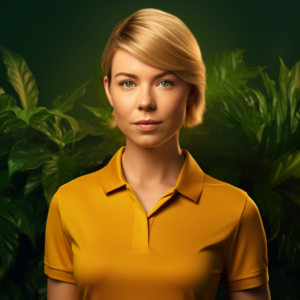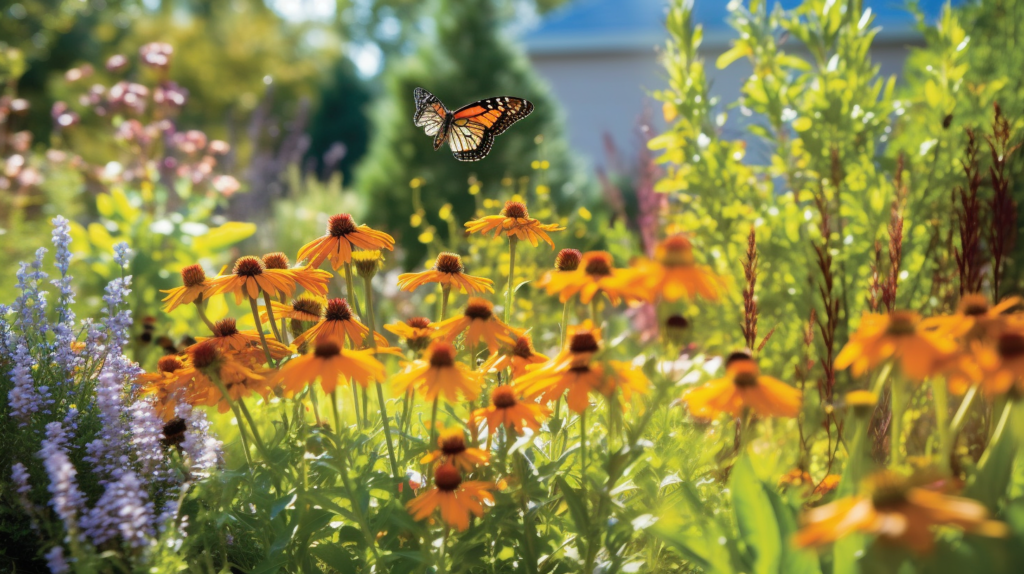Gardens have the incredible power to attract and support a diverse array of pollinators, including bees, butterflies, and birds. By designing your garden to provide a welcoming habitat for these important creatures, you can not only enjoy the beauty of their presence but also contribute to their conservation. In this article, we will explore how to create a pollinator paradise in your own backyard, filled with nectar-rich flowers, host plants, and essential features to support the thriving populations of these vital pollinators.
1. Choose Pollinator-Friendly Plants:
Select a variety of plants that offer abundant nectar and pollen to attract different pollinators. Opt for native flowering plants as they have evolved with local pollinators and are well-suited to your region’s climate and soil conditions. Include a mix of annuals, perennials, and shrubs to provide a continuous food source throughout the seasons.
2. Incorporate Host Plants:
Host plants are essential for certain pollinators, especially butterflies, as they provide a place for them to lay their eggs and serve as food sources for their caterpillars. Research which host plants are preferred by specific pollinators in your area and include them in your garden. For example, milkweed is vital for monarch butterflies, while parsley and dill attract swallowtail butterflies.
3. Provide Water Sources:
Pollinators require water for drinking and bathing. Create shallow dishes with rocks or pebbles to provide a safe drinking spot for bees and butterflies. Consider adding a small birdbath or a shallow water feature with gentle slopes for easy access. Place some floating objects like cork or small stones in the water feature to provide perching spots for butterflies.
4. Plant in Clusters:
Grouping plants together in clusters helps pollinators locate them more easily and encourages efficient foraging. Planting flowers in drifts or clumps also creates a visually appealing display. Aim for a diversity of colors, shapes, and heights to attract a wide range of pollinators and ensure a continuous blooming period throughout the growing season.
5. Provide Shelter and Nesting Areas:
Incorporate features in your garden that offer shelter and nesting opportunities for pollinators. Install bee houses or nesting boxes for solitary bees, which are excellent pollinators. Leave some bare ground or brush piles for ground-nesting bees. Plant shrubs or trees that provide cover and nesting sites for birds, which play a crucial role in pollination as well.
6. Minimize Pesticide Use:
Reduce or eliminate the use of pesticides in your garden, as they can harm pollinators and disrupt the delicate balance of the ecosystem. Instead, embrace natural pest control methods like companion planting, attracting beneficial insects, and practicing good garden hygiene. Encourage natural predators that keep pest populations in check, creating a healthier environment for both pollinators and plants.
7. Educate and Advocate:
Share your knowledge and passion for pollinators with others. Educate your family, friends, and neighbors about the importance of pollinators in our food system and the role they play in maintaining healthy ecosystems. Encourage others to create their own pollinator-friendly gardens and advocate for pollinator conservation in your community.
By creating a pollinator paradise in your garden, you can contribute to the well-being of bees, butterflies, and birds while enjoying the beauty and vibrancy they bring to your outdoor space. By choosing pollinator-friendly plants, providing water sources, incorporating host plants, creating shelter and nesting areas, minimizing pesticide use, and spreading awareness, you can play a vital role in supporting these essential pollinators.









